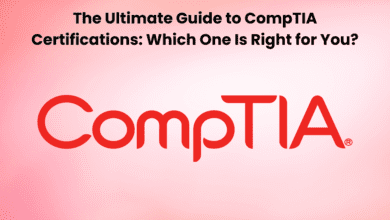Seamlessly Transitioning to Success with HubSpot Migration


In the contemporary visual world of digital marketing, the lightning pace of development with which a business needs to stay competitive is extremely important. Over time, as newer technologies appear and consumer dynamics change across diverse areas of interest, behaviors evolve, and firms need to update their marketing platforms to reflect such evolution. In such cases, HubSpot migration comes into play.
HubSpot migration is the process of taking data, content, and workflows from existing marketing platforms, one by one, and replacing them with HubSpot. For instance, you can migrate from another marketing automation platform, a legacy CRM system, or even have these activities organized manually to fully benefit from HubSpot migration and have all marketing operations in one place, at an optimum level.
Understanding HubSpot Migration
As a primary goal, HubSpot migration is not limited to the moving of data from one platform to another; it is much more deep-rooted than that. This role entails a tactical approach, and it needs to be so to ensure there is an easy flow to full utilization of the HubSpot platform for the benefit of your business. Here’s a breakdown of the key components of HubSpot migration:
Assessment and Planning: The first stage in a migration process begins with an assessment of the existing marketing infrastructure. In this step, we look for your data, content, workflows, and integrations, and danalyzeto detect any problems or improvement areas like errors, slowdowns, misalignment, etc. A thorough needs analysis of your context gives you the necessary direction. Through this analysis, you can craft a migration plan that defines the scope, timeframe, and resources for the migration process.
Data Migration: Data is the lifeblood of any marketing operation, and incorrect or insecure migration is only the beginning of a break in finances. Everyone’s problem is to move contacts, leads, customers, and other vital data from an existing system to HubSpot’s system, which is possible with the help of the system’s powerful tools and resources. Carefully reviewing data at one time ensures the reliability of the migration, whether done manually, using CSV files, or third-party integrations.
Content Migration: Besides data, relocating your content assets is the most critical task in sustaining consistency and brand integrity during migration. Content assets such as blog posts, landing pages, and email templates can be migrated to continue maintaining the completeness of your strategies. The platform provides the means of migrating content, utilizing tools and templates to preserve messaging consistency and align with your marketing strategy.
Workflow Migration: Marketing automation workflows play a vital role in many modern businesses’ marketing operations, helping companies eliminate tedious, repetitive work and run efficiently, engaging the audience and converting them into leads. Transitioning existing workflows into HubSpot consists of creating workflows to automate processes on the HubSpot platform, adding triggers, actions, and conditions to mirror your current workflow.
Integration and Testing:
Once data, content, and workflows have been migrated and tested, it is vital to test the setup’s integrity and function. People should check the data and the message for email deliverability and ensure that interfaces with other systems are working properly (like CRM software or analysis tools, for example). We use HubSpot as our platform because of the wide range of tools it has for testing and debugging, ensuring that everything will work just fine when we are ready to proceed with the launch of your new setup.
Read More: Amazon’s GPT-5x: Revolutionizing AI and Natural Language Processing
The Benefits of HubSpot Migration
Migrating to HubSpot offers a range of benefits for businesses looking to streamline their marketing operations and drive growth:
Unified Platform: The advantage of HubSpot is that all your marketing operations get registered on this one platform, from which you can track leads, manage campaigns, and analyze the performance of each campaign. This approach enforces unity and cross-channel collaboration, making marketing strategies more cohesive and effective.
Scalability and Flexibility: HubSpot is the platform that grows with your business, meaning you can implement different marketing strategies as your company evolves with its demands for more customizations. While the aims and objectives of HubSpot can vary from one business to another, it offers a lot of features, tools, and plans suitable for small businesses to large enterprises.
Advanced Analytics and Reporting: HubSpot offers advanced analytics and reporting that provide you with precise data on your sales and marketing campaign results. You will be able to track key performance indicators, calculate return on investments, and identify areas that need improvement. Real-time dashboards and customizable reports help you make data-driven decisions that drive continuous development and change.
Integration Ecosystem: HubSpot smoothly integrates with other applications, platforms, and tools you may already have, making it more powerful and multipurpose. Whether your goal is linking information with your CRM, orchestrating workflows with Zapier, or evaluating site traffic with Google Analytics, HubSpot provides the flexibility you need.
In Conclusion
Migration to HubSpot is a strategic move for all sorts of businesses to unify and improve their marketing operations in terms of both efficiency and effectiveness, as well as to promote faster growth. Through a partnership with a reliable migration consultant and by making use of HubSpot’s point-and-click solution, organizations can optimally transition to a unified marketing framework that gives them the needed support to realize their business goals.
you may also read digitalfastnews.





